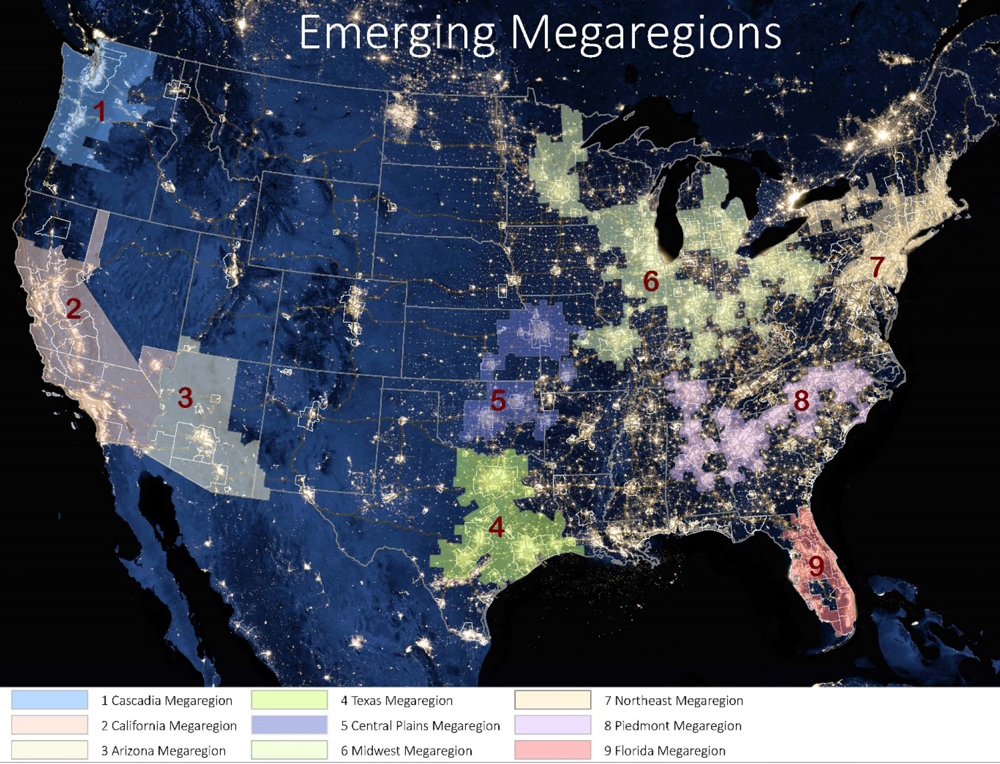Get New Megaregional Planning Resources

Since 2015, APA and the Center for Quality Growth and Regional Development (CQGRD) at the Georgia Institute of Technology have been working to characterize the current state of megaregional planning at the local and regional levels.

The Center for Quality Growth and Regional Development identifies nine megaregions across the country. Image courtesy Georgia Tech Center for Quality Growth and Regional Development.
Identifying Gaps and Opportunities for Megaregional Planning
They've identified gaps in knowledge and practice and barriers to action and opportunities that prevent the incorporation of the megaregional concept into planning practice.
Through this project, APA and CQGRD developed planning frameworks designed to address opportunities for planning agencies to integrate interregional and megaregional considerations into local comprehensive and regional long-range plans.
These frameworks address a range of megaregional considerations, including freight and supply chain management, multi-modal connections, economic interconnections, and environmental systems.
The concept of megaregions — networks of metropolitan areas that share economic, environmental, and cultural features, as well as infrastructure and geographic connections — is transitioning from planning theory to planning practice, and such efforts are becoming more common as cities and regions are thinking beyond their borders to find coordinated solutions to challenges.
Final Report and Case Studies
The final report is available for download on the FHWA Megaregions page.
FHWA also has multiple case studies and reports and resources that provide examples of and information on megaregional planning.
Promoting Collaboration in Cross-border Planning
One example:
In 2001, the San Diego Association of Governments (SANDAG) formed its Borders Committee, a forum to discuss shared interests, challenges, and opportunities with the neighboring Tijuana-Tecate-Playas de Rosarito metropolitan zone in Mexico; the bordering counties of Imperial, Riverside, and Orange; and the 18 federally recognized tribes within San Diego County.
The committee has prioritized focus areas, including accessibility of jobs and housing, transportation, energy and water supply, the environment, economic development, and homeland security. Through its work, the Borders Committee has successfully facilitated multi-jurisdictional planning efforts that address shared goals, including the Otay Mesa-Mesa de Otay Binational Corridor Strategic Plan, adopted in 2007.
Top image: Traffic at the San Diego-Tijuana border at the San Ysidro Port of Entry. Photo by Skalas, Wikimedia Commons, (CC BY 2.0).


